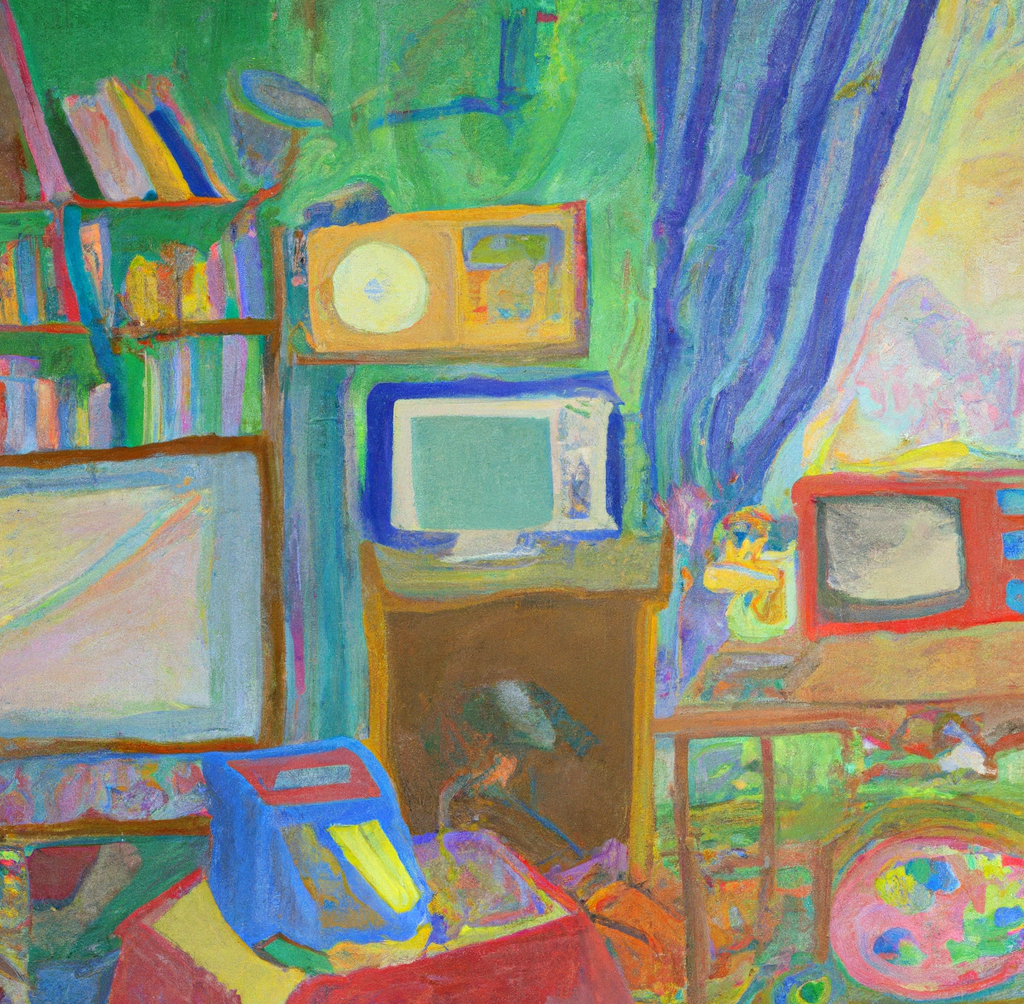Today, our guest speaker led a lesson on the multimedia learning theory and on teaching with the dual-coding theory. I enjoyed this lecture since it contained practical information and advice for our classrooms. It also spoke to a personal interest I have mentioned in fostering a creative and adaptive educational environment.
The dual-coding theory proposes that information is processed in both visual and verbal codes, suggesting that students have two separate cognitive systems for learning. For teaching with the dual coding theory in mind, educational videos and websites like Brain Pop, read-along storybook videos, and simple documentaries of animal behaviours are beneficial. This theory rings true for me, so it was interesting learning about how the concept is defined and illustrated on various educational platforms.

photo created on DALL • E “represent multimedia in the classroom, colourful”
After researching the theory, I realized my practicum classroom has benefited from it, with a video on ecosystems implemented into a science lesson. Since the classroom is split into 2nd and 3rd grade, the second graders had a lesson on frogs, while the older students had a lesson on complex ecosystems as a whole. After their lessons and individual work, the entire class was shown an engaging educational video reiterating the organization of ecosystems. Even though the younger students had no prior knowledge of ecosystems in a structured setting, they all enjoyed the video, and they will likely remember some concepts when they need to recall this information next year!
My L2P mentor teacher for this practicum has been very helpful, providing me and my teaching partner with lots of resources and lesson plan ideas. For the science lesson above, she utilized GenerationGenius.com. There are videos, lesson plans, teacher guides, and more! I knew there were educational videos on the internet, but this website is indispensable since it centralizes all of the resources into one platform. On top of this, GenerationGenius has a level of quality assurance that can’t be guaranteed with a user-generated website such as YouTube, as there’s always a risk of inappropriate content and unpredictable autoplay.

photo created on DALL • E “represent multimedia in the classroom, vibrant“
Seeing this excitement for science in an elementary classroom was wonderful. I am hoping to create a general guide for my own lesson plans to implement illustrations and engaging videos to help students with meaningful and effective learning through this theory. I appreciate this style of teaching and learning—I am constantly thinking of ways to integrate interactive means of learning and fostering a fun classroom environment.
Plus, everyone loves when a film is played in class!
